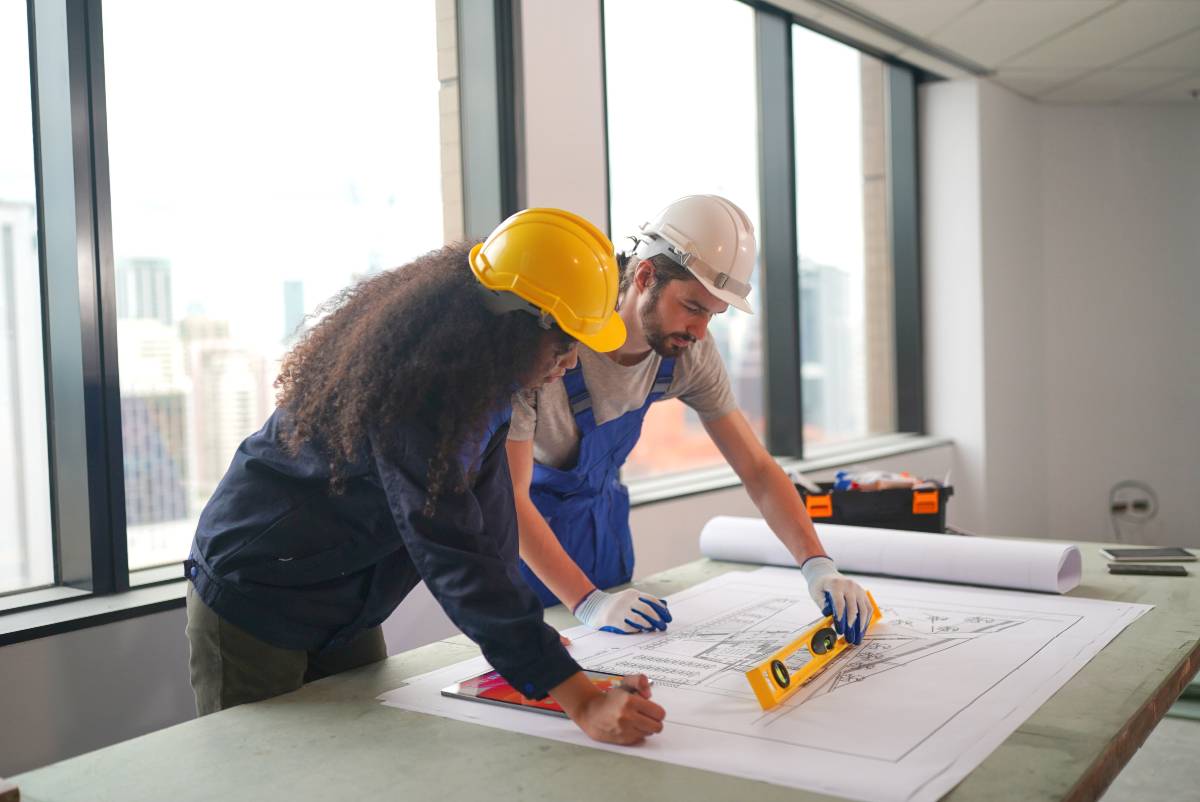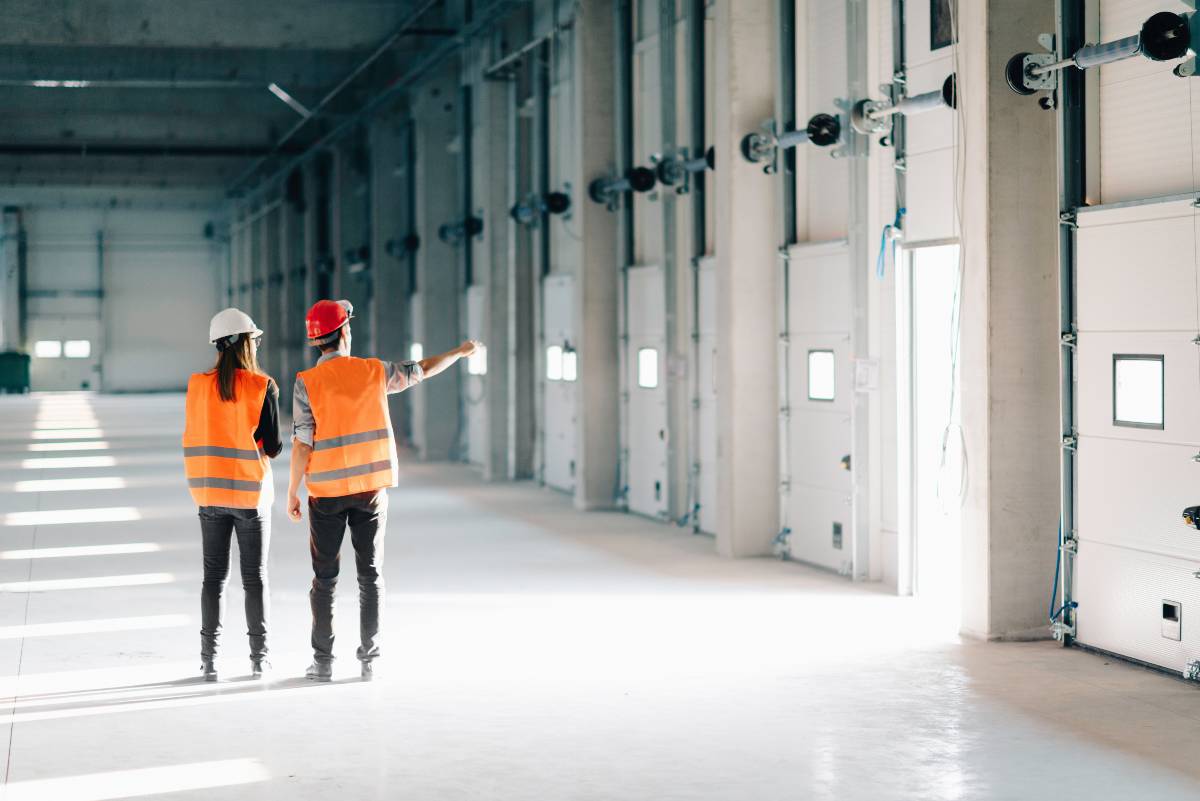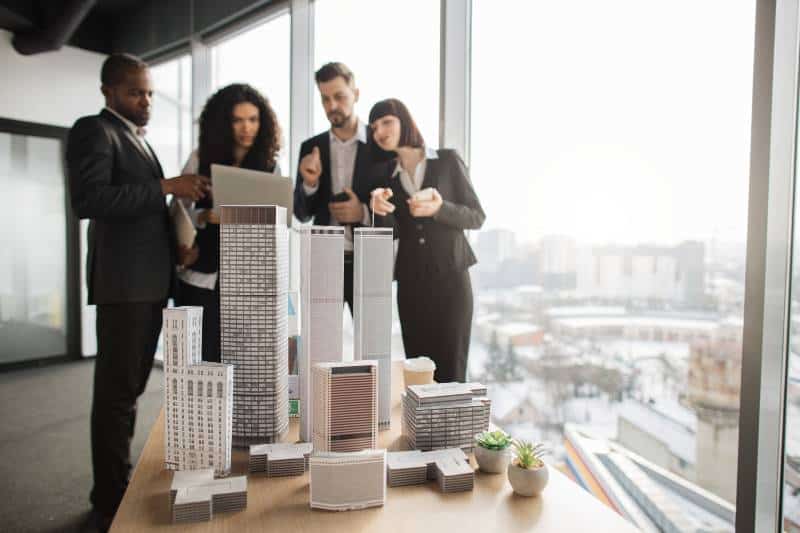Greetings readers! I’m Mike Tolj, a commercial real estate expert dedicated to helping business owners and landlords fulfill their property ambitions. In my 18+ years in the industry, I’ve come to recognize the pivotal role that real estate plays in environmental sustainability.
With buildings contributing enormously to energy consumption and emissions globally, we as CRE professionals have a responsibility to champion practices that reduce the carbon footprint of the sector. Building retrofitting is one of the most impactful ways to drive progress on this pressing challenge.
Key Takeaways
- Building retrofits involve upgrading existing structures to boost energy efficiency and sustainability. Typical upgrades include HVAC systems, lighting, insulation, and renewables.
- Conducting audits to identify high-consumption areas, calculating retrofit ROI, securing financing, planning around disruptions, and educating stakeholders are key considerations.
- Real-world case studies demonstrate the transformative impact of retrofits – reduced costs and emissions and enhanced occupant comfort and asset value.
Modernizing the Built Environment: A Comprehensive Guide to Building Retrofitting Strategies
Introduction to Building Retrofits
Simply put, retrofitting involves revamping existing structures through upgrades and modifications to enhance performance and efficiency. In the context of sustainability, these retrofits aim to reduce energy usage, costs, and carbon emissions associated with operating commercial buildings.
Typical retrofit measures include:
- HVAC (heating, ventilation and air conditioning) system enhancements
- Lighting fixture and control upgrades
- Building envelope insulation improvements
- Renewable energy source integration like solar panels or wind turbines
- Automated building management systems (BMS) installation
With commercial real estate constituting over 65 billion square feet in the United States alone, retrofitting even a fraction of these properties would significantly move the needle on climate action.
Globally, the building sector accounts for 36% of final energy consumption and nearly 40% of total direct and indirect CO2 emissions. This is an immense opportunity to meaningfully mitigate emissions through targeted building upgrades.
Now let’s explore key technical and financial considerations, execution roadmaps, real-world case studies and common barriers and innovations related to successful large-scale retrofit initiatives.

Technical Considerations and Approaches
Several major building components impact energy performance and offer avenues for efficiency improvements. Here are some of the most effective technical retrofits to consider:
Conducting Energy Audits to Identify Optimization Potential
Thorough energy audits examining consumption patterns identify the biggest areas of waste and opportunities for efficiency gains. Detailed submetering also aids in targeting efforts.
Implementing HVAC and Lighting Upgrades
As HVAC and lighting represent the largest shares of energy use in commercial buildings, upgrading to energy-efficient systems and fixtures can significantly reduce consumption and costs.
Improving the Building Envelope
Enhancing insulation, sealing air leaks and installing efficient windows optimize heat retention/loss and thermal comfort while lowering energy demands.
Integrating Renewable Energy Sources
Leveraging on-site clean energy generation through solar panels, wind turbines etc. minimizes reliance on grids and offsets purchased electricity requirements.
Installing Automated Building Management Systems (BMS)
Smart, Internet-enabled BMS allows for granular monitoring and real-time adjustments to optimize energy usage across integrated building systems.
| Retrofit Measure | Typical Reduction | Payback Period |
|---|---|---|
| LED Lighting Upgrade | 40-80% Lower Lighting Power Density | 2-3 Years |
| HVAC Controls Upgrade | 20-30% Decrease in HVAC Energy | 1-3 Years |
| High-Performance Windows | 15-20% Drop in Heat Loss/Gain | 7-15 Years |
| Building Automation Systems | 10-40% Energy Savings from Streamlined Control/Monitoring | 2-4 Years |
As evident, most major retrofits pay for themselves in energy savings fairly quickly while reducing carbon emissions.
Financial Analysis and Planning
While environmental responsibility should be incentive enough, selling stakeholders on disruptive retrofits also requires demonstrating strong financial returns. Here’s what to consider on that front:
Calculating the Retrofit ROI and Payback Period
Conduct detailed energy modeling during audits to estimate savings in energy and maintenance costs. Compare these to upfront and ongoing expenses of upgrades to determine payback periods and overall return on investment (ROI).
Exploring Incentive Programs and Financing Options
Take advantage of utility or federal/state financial incentives and rebates for energy efficiency retrofits to improve payback horizons. Also consider attractive financing options like Property Assessed Clean Energy (PACE) funding requiring no upfront outlay.
Offsetting Operating Costs through Energy Savings
The most direct financial benefit of retrofits is significantly lowered utility bills from energy efficiency gains. For a 100,000 sq. ft. office building, this could mean six figure annual savings in purchased energy alone.
Increasing Asset Value and Rental Income Potential
With sustainably-certified real estate commanding rental/occupancy and sales price premiums, retrofits also directly enhance asset value and income generation potential.
Implementation Framework and Execution Roadmap
Meticulous planning and judicious sequencing are vital for smoothly executing disruptive retrofit initiatives. Here is an overview of key implementation activities:
Conducting Audits to Identify Target Areas
Prioritizing measures with the largest energy optimization and financial payoff allows for systematically addressing retrofits by area efficiency.
Procuring Professional Guidance and Expertise
Engage reputable energy consultants, sustainability experts and specialized contractors early on for technical aid in scoping upgrades aligned to efficiency benchmarks.
Planning for Minimal Disruption to Operations
Proactively liaise with occupants to schedule work during lulls/off-hours. Where possible, take a phased approach to limit downtime. Offer temporary space to severely impacted tenants if needed.
Educating and Engaging Key Stakeholders
Foster buy-in by demonstrating potential cost savings, risk mitigation and competitive advantages. Regularly engage tenants on timelines, contingency protocols etc. to ease cooperation.
Monitoring Energy Savings and Sustainability Metrics
Upon completion, track granular energy usage along with holistic emissions and environmental certifications to continually optimize and quantify improvements.
While individual measures have defined scopes, view retrofitting as an iterative optimization process versus a one-time initiative. Continually identify areas for betterment as new technologies and incentives emerge. With diligent monitoring and maintenance, some modifications may ultimately pay for themselves multiple times over.

Case Studies Demonstrating Transformative Retrofits
Skeptical about pursuing disruptive upgrades disrupting your own properties? Here are some stellar examples of commercial retrofits delivering stunning returns across metrics:
Empire State Building, New York City
The iconic structure reduced energy usage by 38%, yielding over $4 million in annual savings. The retrofit ROI was about 3 years with additional gains from renewable energy credits.
The Crystal, London
This Siemens-owned sustainable cities center achieved a 90% emissions decrease through radical upgrades. The building now relies on solar power and ground source heat pumps for self-sufficiency.
Change Initiative Retail Center, Dubai
The first LEED Platinum certified retail building in the UAE cut lighting power density by 40% and slashed water usage by 70% via efficient fixtures. The retrofit financed itself in under 3 years.
These examples underscore retrofitting’s immense potential for supercharging energy savings and advancing carbon neutrality. And they represent just the tip of the iceberg – over 100,000 commercial retrofit initiatives occur annually in the United States itself, accelerated by attractive incentives and financing.
Overcoming Common Barriers and Challenges
Despite the compelling benefits highlighted so far, persuading stakeholders to undertake major retrofits can still prove challenging:
Addressing Disruptions to Business Operations
Develop contingency protocols guiding tenant engagement and accommodations to ease cooperation throughout disruptive works.
Managing Budget Limitations
Thorough audits identifying highest-optimization areas allow for targeted, phased programs maximizing bang for buck. Various incentives can directly defray 30-70% of project costs as well.
Educating Stakeholders on Long-Term Benefits
Proactively engage occupants on project timelines and showcase bottom line efficiencies, alongside sustainability credence, to garner buy-in on temporary inconveniences enabling immense future gains.
Emerging Innovations to Watch
Beyond current best practices, several cutting-edge technologies show further promise for enhancing building performance:
Building-Integrated Photovoltaics (BIPV)
Solar cells seamlessly integrated into facades, skylights and shading elements boost on-site clean energy generation while serving as weatherproof building components.
Internet of Things (IoT) Enabled Smart Buildings
Networks of connected sensors feeding building data to analytics platforms allow for self-optimizing buildings that continually tune energy usage based on advanced predictive modeling.
Energy Storage Solutions
Large battery banks (like Tesla Powerwalls) store solar energy for use during peak demand times rather than exporting excess power to the grid, increasing self-consumption.
These innovations can deliver efficiency and reliability improvements beyond traditional upgrades. I advise monitoring their continued maturation to identify integration opportunities into future retrofit initiatives.
Reducing energy consumption through retrofits
When doing an energy retrofit on a building, the main goal is to reduce how much power is used overall. Simple upgrades like swapping out lightbulbs, getting better HVAC systems, and adding insulation make a big difference. Doing an energy audit first is important to see where the problems are. That way you can pick the changes that will save the most energy for the lowest cost. Things like automated controls and getting power from solar panels also cut usage over time. Some retrofits pay for themselves within just a few years with all the savings.
Implementing energy-efficient building envelope designs
The building envelope is the outer parts of a structure – the walls, windows, roof and so on. Improving this envelope to let less heat and air flow out makes retrofits way more effective. Adding insulation in walls and attics keeps warmth inside during winter and cool air inside during summer. Getting special glazing and weatherstripping for windows makes them tighter. Changing to cool roofing materials helps too. Spending money on a better envelope means you can buy smaller, cheaper HVAC systems. It also keeps inside conditions more comfortable for occupants. Envelope retrofits may cost more upfront but quickly pay off.
Case studies showcasing successful retrofit projects
There are lots of great real-world examples of energy retrofits saving money and meeting green building standards. An office tower in New York upgraded its lighting and insulation. That single retrofit created 38% energy savings – over $4 million per year less spent on utilities. A building in London achieved net zero carbon emissions through new solar panels and ground heat pumps. In Dubai, a shopping center went from zero to LEED Platinum certification via light sensors, rainwater collection for plumbing, and much more. Many retrofits like these pay back their own costs in just a few years thanks to lower energy bills. They show that existing buildings can improve efficiency and sustainability significantly through renovations and technology upgrades.
Implementing sustainable solutions for energy savings
There are many ways to save power when retrofitting buildings in extremely hot dry areas. Upgrading to smart thermostats, energy-efficient AC units, and variable speed fans keep internal temperatures comfortable while lowering utility bills. Strategically using thermal insulation, heat-reflective coatings, and shaded windows reduces heat entering indoors. Installing timers and sensors for lighting ensures illumination only when needed. Simple monitoring of energy usage patterns identifies additional conservation opportunities. Phased retrofits allow owners to systematically implement solutions with rapid paybacks first. Following sustainable practices makes economic along with environmental sense.
Utilizing renewable energy sources in retrofitting projects
Incorporating renewable power sources like solar panels and wind turbines during retrofits maximizes sustainability. Solar PV systems generate abundant emissions-free energy year-round in sunny desert climates. Solar water heating meets hot water needs using free abundant heat. Small wind turbines can provide supplemental clean electricity too. Building-integrated solar products like windows, shades and rooftop tiles seamlessly install during facade upgrades. With battery costs falling sharply, solar paired with storage sharply cuts peak demand charges. Transitioning to self-supplying renewables protects owners from future fossil fuel price and carbon tax volatility.
Considerations for energy-efficient office buildings in hot climates
Office spaces in extremely hot regions need specialized approaches when retrofitting for efficiency. Envelope insulation using radiant barrier films and coatings keep heat out. Solar window tints and shades mitigate indoor glare while lowering cooling loads. Demand-control ventilation with CO2 monitoring saves air conditioning when spaces are underutilized. Highly efficient water-cooled AC systems maximize performance despite scorching outdoor conditions. Connecting fire/life-safety and security systems to building automation systems allows for smarter, more predictive operation. Zach overheating alerts guide smarter manual interventions as well. Lastly, onsite renewables generation further lowers grid dependence. Carefully tailored measures boost occupant comfort and productivity alongside energy savings.
FAQs
What are the most proven ways to enhance energy efficiency in aging commercial buildings?
The most effective retrofits include LED lighting systems, smart HVAC controls, improved insulation, and building automation systems. These solutions reliably achieve 20-40% energy savings with reasonable 3-7 year payback.
How can I calculate the potential financial payoff from investing in major retrofit projects?
Conduct detailed energy audits and modeling to estimate annual cost savings from reduced energy/maintenance expenses. Compare these savings to the upfront and ongoing costs of proposed retrofits to determine the overall return on investment and payback period.
What incentives are available to defray the costs of energy efficiency retrofits?
Many utility companies and state/federal agencies offer substantial rebates, tax credits, grants and low-interest financing to building owners undertaking qualifying energy sustainability upgrades – covering 30-70% of project costs.
What specialized consultants can offer guidance on planning and implementing complex retrofits?
Engage commercial energy efficiency consultants and sustainability experts early on for technical aid in scoping upgrades aligned to your goals. Specialty contractors adept at energy systems integration are also invaluable for seamless execution.
How can I limit the disruptiveness of major retrofits to ongoing business operations?
Proactively develop accommodation protocols guiding tenant engagement throughout the retrofit lifecycle. Take a phased approach when possible, schedule disruptive work during lulls, and offer temporary space to severely impacted occupants.
What role does the Department of Energy play in promoting energy retrofitting of buildings?
The Department of Energy plays a key role in promoting energy retrofitting of buildings by providing resources, guidelines, and financial incentives to encourage energy efficiency improvements.
How can energy retrofitting of existing buildings help in minimizing energy consumption in the long term?
Energy retrofitting of existing buildings can help in minimizing energy consumption in the long term by improving building performance, reducing energy waste, and optimizing energy usage.
Conclusion
I hope this guide has shed light on the compelling case for prioritizing energy efficiency retrofits within commercial real estate portfolios – both from financial and ethical standpoints.
With climate action more crucial than ever, our industry is well-positioned to drive progress through prudent building upgrades. beyond growing enterprise value, such leadership can ignite sector-wide change towards a sustainable built environment.
As your commercial real estate advisor, I’m here to help navigate potential retrofit opportunities that align with your risk appetite, investment goals, and sustainability objectives. Schedule a consultation today to explore modernization options tailored to your assets.
Together, through conscientious stewardship of the buildings we manage, we can build towards a brighter future.




